In 2025, customer reviews will be more than just social proof; they will be a key part of marketing that helps you stand out in a crowded digital space. Real feedback builds trust, makes you more credible, and helps you sell more.
Collecting reviews is important and easy to do, no matter how big or small your business is, whether it’s a developing startup or a big e-retailer. If you do things correctly, satisfied consumers can become committed supporters.
These 9 unique and customer-friendly strategies, which include personalized email inquiries, gamified rewards, and referral programs, are meant to make the review process easy, fun, and useful. We will also propose using charts and graphics to make your review method even more interesting. Let’s look into how to use these ideas in 2025.
Why Customer Reviews Are Essential:
Reviews are online evidence of the worthiness of your brand and this provides the consumer the assurance to select your products. They are an effective growth tool, and this is why they are important:
1. Credibility as well as Trustworthiness
Consumers believe in the reviews just as they trust personal recommendations. Therefore, credibility and trustworthiness is vital. Reviews are an effective technique to establish confidence with prospective customers.
If people are able to read genuine comments from people who’ve tried the product or service they feel like getting help from a close friend. It’s a feeling of trust that helps a company appear trustworthy and friendly. Businesses should encourage genuine reviews.
2. SEO Benefits
Reviews often include natural keywords that can help boost your rankings on search engines. This will increase the visibility of your site.
Customer reviews are a secret way to boost your online visibility. When people naturally use specific keywords in their reviews — like “cozy winter jacket” or “reliable auto repair service”–it assists search engines in understanding the subject matter of your company or product. It can help push your site or page on your product higher in the search results, which makes it much easier for potential clients to locate the site.
3. Sales Boost
Products with reviews tend to sell better because they give buyers confidence in their quality and usefulness. When buyers can see the details regarding the product’s performance–such as how long the battery can last or how comfy a pair of shoes feels, it reduces doubts and boosts their confidence.
Just a handful of positive reviews are a significant impression, as it indicates that actual users have used and enjoyed the item. The reassurance can lead to greater sales as consumers believe they’ve made an educated decision instead of making a bet.
Don’t Hide Negative Reviews
While positive reviews are important, don’t shy away from showing the occasional negative one. A mix of feedback helps reveal your brand as honest and transparent. Shoppers are often skeptical of a product with only perfect reviews. A thoughtful response to criticism can increase credibility and even turn a negative experience into a positive one.
4. Customer Loyalty
While positive reviews are important, don’t shy away from showing the occasional negative one. A mix of feedback helps reveal your brand as honest and transparent. Shoppers are often skeptical of a product with only perfect reviews. A thoughtful response to criticism can increase credibility and even turn a negative experience into a positive one.
The 9 Effective Ways to Collect Customer Reviews in 2025:
- Use Personalized Emails after Purchase
- In-app Reviews Prompts Use
- Use SMS to Get an Immediate Response
- Engage through Social Media
- Configure Pop-Ups on Add Website Exit-Intent
- Make Use of Offline Touchpoints with QR Codes
- Give Gamified Rewards
- Launch a Referral Program for Reviews
- Automate with Smart Tools
1. Use Personalized Emails after Purchase
Even an email posted following a purchase could encourage customers to post their reviews. You can get them excited to leave a review by addressing them individually and targeting the communication time. For example, send them a personalized email 2–3 days after they buy something, allowing them time to use it and give you honest feedback with excitement.

How to Do It:
- Deliver the email some days later to support product utilization.
- Be friendly in your tone with an apparent call-to-action, such as, Share Your Feedback!
- Making the review form easy and mobile-friendly.
Why It Works: Personalized emails, customized to each customer’s preferences are natural and engage the customers at the right time and therefore have greater response rates.
2. In-App Review Prompts Use
Pop-up messages within a mobile app are also a good choice to request reviews after a business has a mobile app. They are triggered when they interact with the user so the customer can easily post his comments without having to leave the application.
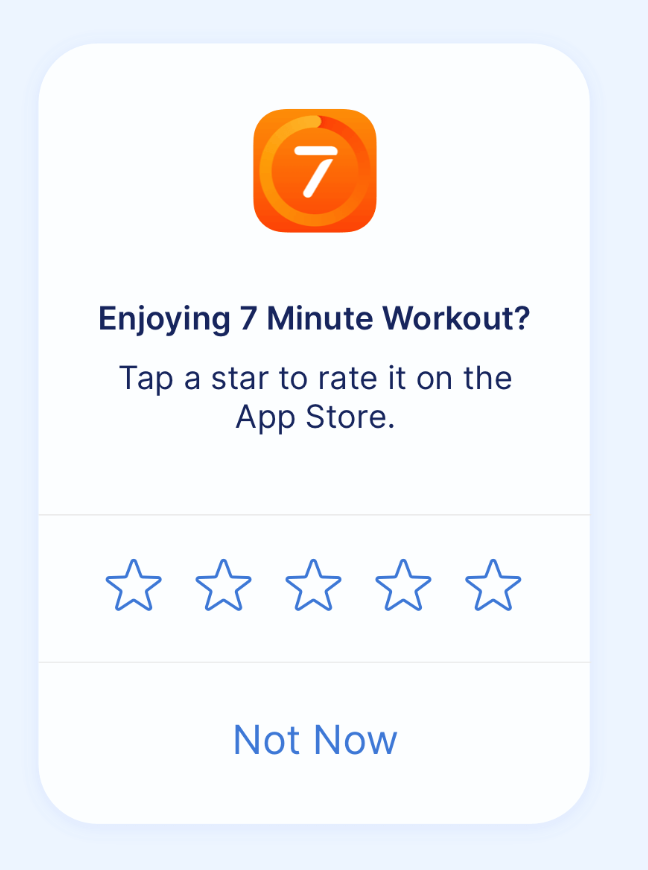
How to Do It:
- Trigger follows a positive action, i.e. finalizes a purchase of a product or interacts with a feature.
- Design pop-ups that are non-intrusive and offer a choice such as the following: Rate Now or Skip Now.
- Make it interesting by using a catchphrase as in, Love our app? Why do you say so? Tell us why!
Why It Works: Customers receive in-app prompts, which means that the participation increases since they are usually in an active state.
3. Use SMS to Get an Immediate Response
SMS has what is close to a 100% open rate, and therefore the channel is a very powerful tool in terms of requesting reviews. A short, amicable text containing a link to a review form can be sure of an immediate action.
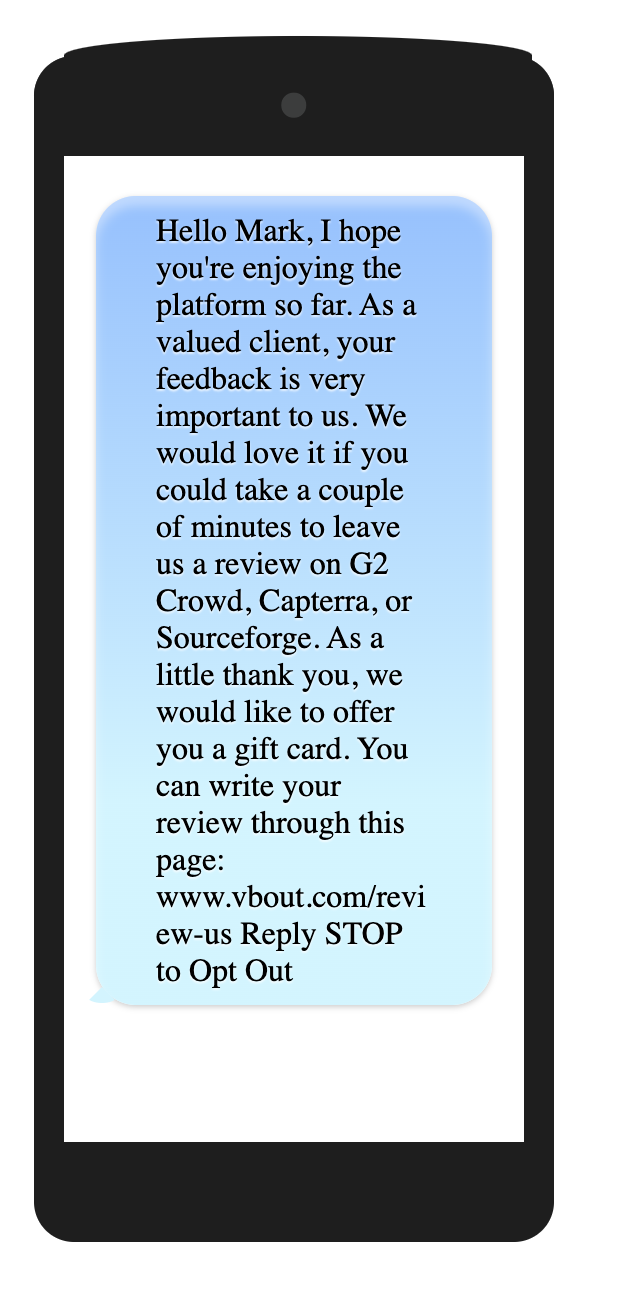
How to Do It:
- Deliver the message a couple of days after buying to match product usage.
- Make the message short and link directly to a mobile-optimised review page.
- Make the request sound personal and urgent with a tone of conversation.
Why It Works: SMS is to the point and action actively will encourage the customers to react fast.
4. Engage Through Social Media
Social media sites are the best places to promote reviews by sending interesting posts or by direct communication. Asking for reviews on social channels can amplify your reach and make feedback collection interactive.
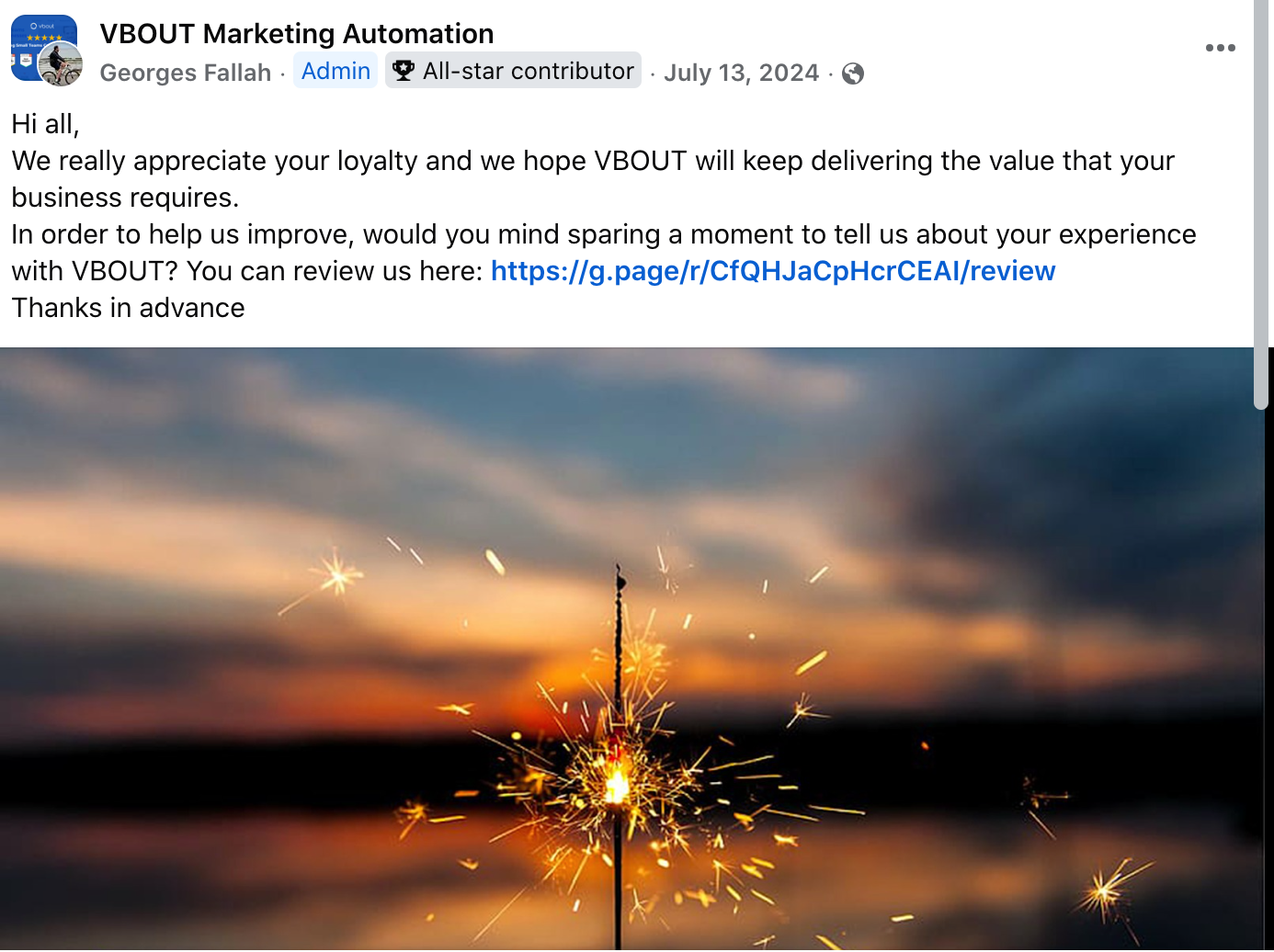
How to Do It:
- Post content asking the customer to give feedback, like, Loved your purchase? Write a review!”
- Instead, use Stories or direct messages to target new buyers with personalized prompts.
- Put review pages links in posts or bios so that readers can easily access.
Why It Works: The customer is already participating on social media and this serves to increase engagement.
5. Configure Pop-Ups on Add Website Exit-Intent
An exit-intent pop-up will show up when a user is ready to leave your site and give one more opportunity to gather feedback. They may be very useful in getting reviews of visitors who may otherwise decide to leave.
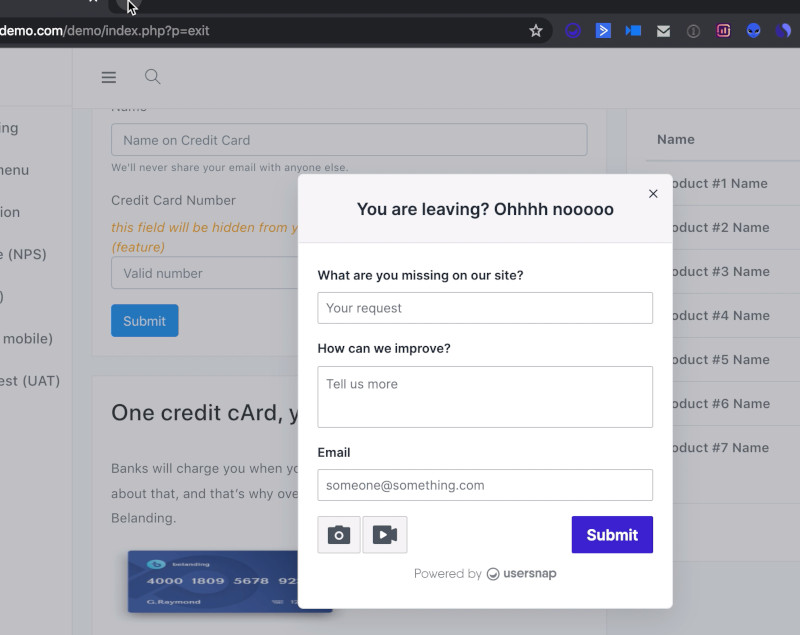
How to Do It:
- Pop-up after critical actions such as visiting a product or placing a purchase.
- Apply a positive statement, e.g. “Before you go, express your ideas!”
- Provide a simple rate choice, such as a star rate, so that it becomes easier.
Why It Works: Exit pop-ups attract attention at the right time making more people give you feedback. By ensuring the pop-up is non-disruptive and optional, it invites more customers to share valuable insights without feeling pressured.
6. Make Use of Offline Touchpoints with QR Codes
The physical products with QR codes, receipts, or in-store posters are the way to turn online and offline communication into a simple process of review leaving. This technique is wonderful in communicating with the customers, who are physically present.
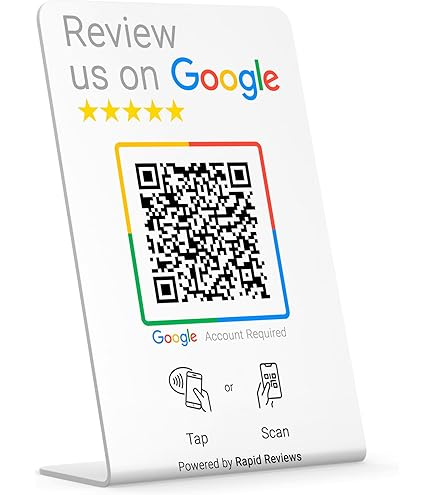
How to Do It:
- Place QR on packaging, thank-you card, or in-store signage.
- Connect the code to a friendly review page.
- Provide a little incentive, e.g. discount, so that people scan and review.
Why It Works: QR codes offer a convenient method for offline shoppers to give electronic feedback by scanning a code with their phones, which takes them right to a feedback form. This strategy is quick, easy to use, and connects people who shop in stores with others who shop online.
7. Give Gamified Rewards
Depending on what you review, you may gamify the review process. You can encourage customers to leave feedback by giving them something tangible, such as points, discounts, or a place on the leaderboard.
How to Do It:
- Reward case by case reviews with discounts, loyalty points, or exclusive perks.
- To motivate competitors, form a leaderboard of high reviewers.
- Market the initiative on your own site, email, or social media.
Why It Works: Gamification taps into the motivations of the customers to feel recognized and rewarded as part of the drive to engage in the activity.
8. Launch a Referral Program for Reviews
The most effective way to optimize engagement is to launch a referral program where customers can receive rewards for both leaving a review and referring friends to participate. This two sided strategy promotes feedback and word of mouth about your brand.
How to Do It:
- Have incentives (e.g. discounts or credits) to the online user who left a review and who referred other customers.
- Advertise the program via emails, social media, or your web site.
- Allow an easy to use dashboard to monitor referrals and to track reviews.
Why It Works: Referral programs use the power of word-of-mouth marketing and feedback collection to build trust and get people more involved.
When you give consumers rewards for referring friends and sharing their experiences, you tap into their social networks, which leads to real endorsements that make your business more trustworthy.
Referring others to your business gives customers a sense of pride and belonging, often leading to more detailed, positive reviews.
9. Automate with Smart Tools
Asking for reviews streamlines the process by automating personalized prompts. Platforms like VBOUT allow you to automate personalized review requests via email or SMS, helping you reach customers at just the right time.
How to Do It:
- Set up automatic emails or SMS messages to be sent out within 2-3 days of an order inviting customers to sign up for the referral program by sending inviting, personalized messages (e.g., “Loved your recent purchase? Send it to your friends !”).
- Invites to make a referral are in keeping with the brand’s distinctive style and tone like fun or professional, in order to create an unforgettable, consistent experience that is memorable and connects with clients.
- Utilize analytics tools to track the number of referrals signed up and to review submissions. You can then improve the strategy by experimenting with different rewards or messaging options to encourage participation.
Why It Works: Automation is quick and guarantees a regular and focused application of review requests and therefore, efficient.
Conclusion
In 2025, customer reviews are the foundation that will make e-commerce a success. By implementing these nine strategies—personalized emails, in-app prompts, SMS, social media, exit pop-ups, QR codes, gamified incentives, launching a referral program, and asking for reviews —you can collect feedback that builds trust, boosts sales, and fosters loyalty.
To increase the credibility of your brand in the highly competitive combine automation with personalization to make the process of collecting reviews seamless and engaging . Strategies such as targeted review requests and referral programs transform happy customers into advocates for your brand which boost confidence and sales.
Try these strategies and monitor your audience’s reaction and adjust to discover what resonates with your customers the most. For more insights on how to leverage feedback, read our guide on how to build loyalty with customer Feedback.
About the Author
Trends-Focused Creative Content Writer
Zain ul Hassan is a Salesforce CRM expert with a passion for tech and smart ideas. A content writer who makes tech and AI easy to understand. Loves spending free time watching or playing cricket.
Don’t forget to share this article
Related articles
Nothing found.

